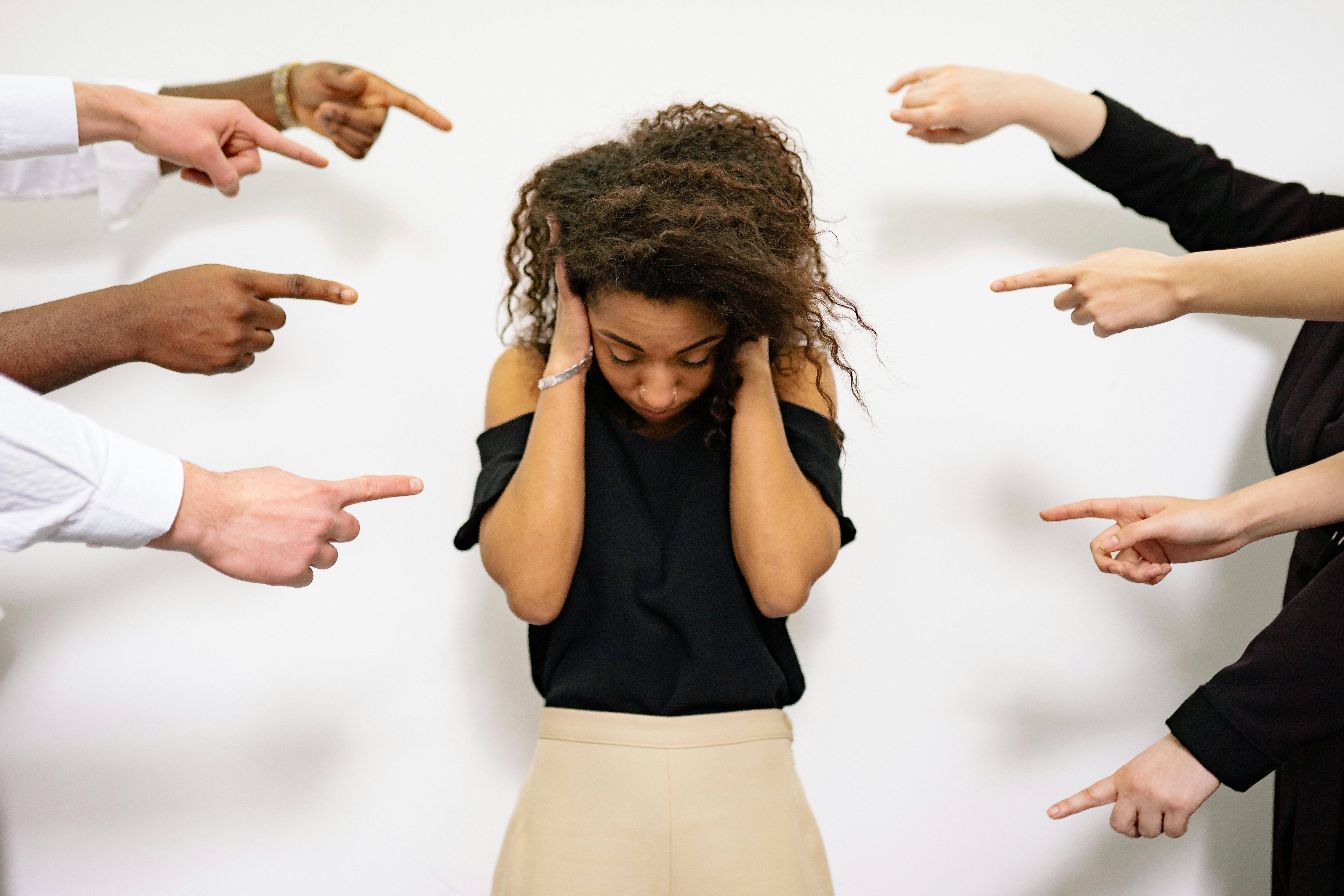If you’ve ever walked into a room and instantly felt the atmosphere—whether tense, joyful, or awkward—without anyone saying a word, you’ve experienced social cues at work. These unspoken signals guide almost every part of our daily interactions. They help us understand situations, align with social norms, and avoid embarrassment, like laughing at the wrong time during a serious conversation.
Understanding what are social cues is not only essential for smooth communication but also for building meaningful relationships, professional success, and even self-confidence in navigating the trickiest of social settings.
Think of them as the Wi-Fi signals of human interaction: invisible, everywhere, and something you notice most when they’re missing. Without them, conversations would feel like speaking a different language.
In this guide, we’ll dive deep into what social cues are, the different types, why they matter, and how you can get better at reading them—even if you secretly feel like you missed that class back in school.
What Are Social Cues?
Social cues are the subtle signals—both verbal and nonverbal—that people send to communicate feelings, attitudes, and intent. These signals are often unspoken, but they play a central role in how we interpret interactions.
They can include:
- Body language (e.g., posture, gestures)
- Facial expressions (smiles, frowns, raised eyebrows)
- Tone of voice
- Eye contact
- The context in which words are spoken
- Even silence
In short, social cues are how we “read the room.” When you miss them, the result can range from slightly awkward to social disaster territory.
Why Social Cues Matter
Understanding social cues isn’t just about being polite—it’s about survival in modern-day society. Humans are social creatures, and a large percentage of our communication is nonverbal. Ignoring or missing social cues can lead to misunderstandings, disconnection, and even strained professional relationships.
Benefits of Reading Social Cues Well
- Better relationships: You understand when people are comfortable, uncomfortable, or engaged.
- Professional success: Meetings, interviews, and negotiations often rely more on unspoken signals than actual words.
- Conflict prevention: Picking up on tension early can save you from unnecessary blow-ups.
- Empathy and emotional intelligence: Reading cues improves your ability to connect with others authentically.
The bottom line—master social cues, and you’ll navigate life with fewer awkward silences and more genuine connections.
Types of Social Cues
Verbal Social Cues
Verbal cues aren't just about the words spoken—they include how things are said, their emotional undertones, and pauses. Elements include:
- Tone of voice: A sarcastic or flat tone can completely change the message behind words, and tone often conveys sincerity, anger, excitement, or boredom more than the words themselves.
- Word choice: Choosing formal or casual language signals context (e.g., “Hey dude!” vs. “Good afternoon, Professor.”) and can reveal intention or relationship status.
- Pauses, silences, and pace: Moments of silence might indicate discomfort, disagreement, agreement, or reflection. An abrupt pause may mean hesitation, while drawn-out silences often communicate uncertainty or tension.

Nonverbal Social Cues
Nonverbal cues account for as much as 60-93% of emotional meaning in communication, making them incredibly important. The main categories include:
- Facial expressions: Universal expressions (smiles, frowns, surprise) often broadcast emotions more reliably than verbal signals. A raised eyebrow or tight jaw can reveal true feelings even if words contradict them.
- Body language and posture: Crossed arms may suggest defensiveness, openness can indicate ease, and slumped shoulders imply disappointment or fatigue.
- Gestures: Nods, shrugs, waves, and finger-pointing deliver messages without words. Mirroring another’s gesture subconsciously builds rapport—a phenomenon explored in social psychology.
- Eye contact: Looking away can indicate discomfort, while a steady gaze typically shows engagement. Too much can feel intimidating or dominant, and too little may suggest anxiety or dishonesty.
- Proxemics (personal space): Standing close might signal intimacy or comfort; distance can show disinterest or respect for boundaries.
Environmental and Contextual Cues
These cues originate from the setting and situation, influencing how messages are perceived and what behaviour is appropriate.
- Social context: Behaviour shifts based on setting—formal settings (offices, funerals) demand different cues than informal ones (cafés, parties).
- Cultural expectations: Norms vary widely across cultures. For example, a bow signifies respect in some cultures, while strong eye contact may be rude elsewhere.
- Physical environment and triggers: Contextual cues include the objects present, time, and sensory signals; a ringing phone or a specific playlist can trigger particular behaviours or emotions automatically.
How Social Cues Differ Across Cultures
Gestures and Hand Signals
The meaning of gestures can shift drastically between cultures. For instance, the thumbs-up is positive in the US and UK but can be considered rude or even obscene in some Middle Eastern, West African, and South American countries. The “OK” sign is friendly in the US, but potentially vulgar in Brazil or Turkey.

Eye Contact
In the West (U.S., Europe), direct eye contact is seen as confident and trustworthy. In some Asian and Indigenous communities, averting the gaze can signal respect, especially when dealing with elders or authority figures. Too much eye contact may seem confrontational in these settings.
Personal Space
North Americans and Northern Europeans usually prefer a greater “bubble” of personal space, while Latin American and Mediterranean cultures are comfortable with closer proximity during interactions. Middle Eastern cultures may also favour closeness, particularly among friends, while expecting more distance with strangers.
Facial Expressions and Greetings
Smiling in public or with strangers is common in many Western societies but reserved for close relationships in some Asian cultures. The handshake can vary as well, from firm in the US to lighter or replaced by bowing in Asian societies. Mediterranean cultures often greet with cheek kisses.
Use of Silence
Silence in conversation can signify respect and attentiveness in some Eastern and Indigenous cultures, but may be interpreted as discomfort or lack of engagement in Western cultures. This can create misunderstandings in cross-cultural settings.
High-Context vs Low-Context Communication
Eastern, collectivist cultures often use implicit, non-verbal cues and indirect speech. Western, individualistic cultures prioritise direct, explicit communication.
Common Social Cues You See Every Day
At Work:
- Nodding during a meeting: shows attentiveness and agreement, universally recognised but sometimes less overt in Asian settings.
- Glancing at the clock: perceived as impatience or boredom—though this nonverbal cue is common globally, it is frowned upon in formal settings everywhere.
With Friends:
- Smiling warmly: signals comfort, friendliness, and connection. In many Western cultures, it’s done even with strangers, while in some Asian cultures, it’s more reserved.
- Crossing arms: often interpreted as disengagement or defensiveness, though it can also mean comfort in cold climates—context matters.
In Romantic Settings:
- Leaning in during conversation: shows interest and openness, generally positive in most cultures, but the degree of physical closeness varies.
- Avoiding eye contact: may signal nervousness, shyness, or disinterest. Interpretation depends on cultural context—could also mean respect in certain settings.
Signs You’re Missing Social Cues
- Others may point out that you “don’t read situations well” or seem confused by your reactions.
- Conversations often end awkwardly or contain extended silences that feel uncomfortable.
- People around you may show signs of frustration or withdraw, but the reasons may be unclear.
- Oversharing personal details in settings where it feels inappropriate or failing to respond to social boundaries.
- Poor eye contact, dominating conversations, or failing to listen actively are other strong indicators.
Consequences of Missing Social Cues
- Misunderstandings are common, leading to friction and strained relationships in both personal and professional life.
- Struggling to fit into group dynamics or handle workplace scenarios, sometimes resulting in social isolation.
- Increased anxiety, stress, and challenges in building meaningful connections, especially for neurodiverse individuals.
- Behavioural problems can develop, impacting academic and job success.
- Feeling awkward or excluded in social or group settings.
How to Get Better at Reading Social Cues
Learning to recognise social cues is a skill—improvement comes with self-awareness, observation, and consistent practice.
- Pay attention to nonverbal signals: Focus on body language, facial expressions, and tone to decode intentions beyond words.
- Practice active listening: Listen for emotional undertones, not just literal statements, and engage in feedback during conversations.
- Ask for feedback: Trusted friends or mentors can point out patterns or missed cues, offering perspective on your interactions.
- Learn through observation: Watch public interactions, movies, and shows; note how others react, and reflect on these patterns.
- Social practice: Engage more often in face-to-face interactions, as regular socialising sharpens cue recognition skills.
- Give permission for feedback: Let people know it’s okay to point out missed cues—they’ll help you improve faster.

Can Social Cues Be Taught?
The short answer: Absolutely.
Social cues can be taught—and research overwhelmingly supports this. From early childhood to adulthood, parents, educators, and therapists play vital roles in helping individuals learn how to read and respond to social cues using evidence-based methods like modelling, role-playing, real-life scenarios, positive reinforcement, and interactive group activities.
These skills develop through observation, consistent practice, direct feedback, and a supportive environment that values communication and empathy.
For adults, communication coaching, therapy, and structured social skills training can dramatically improve the recognition and use of social cues, proving that social competence is adaptable at any stage of life—not fixed at birth.
The process is akin to learning a language: with patience, constructive feedback, and authentic practice, anyone can get better at interpreting the invisible choreography of human connection.

.png)
.png)



